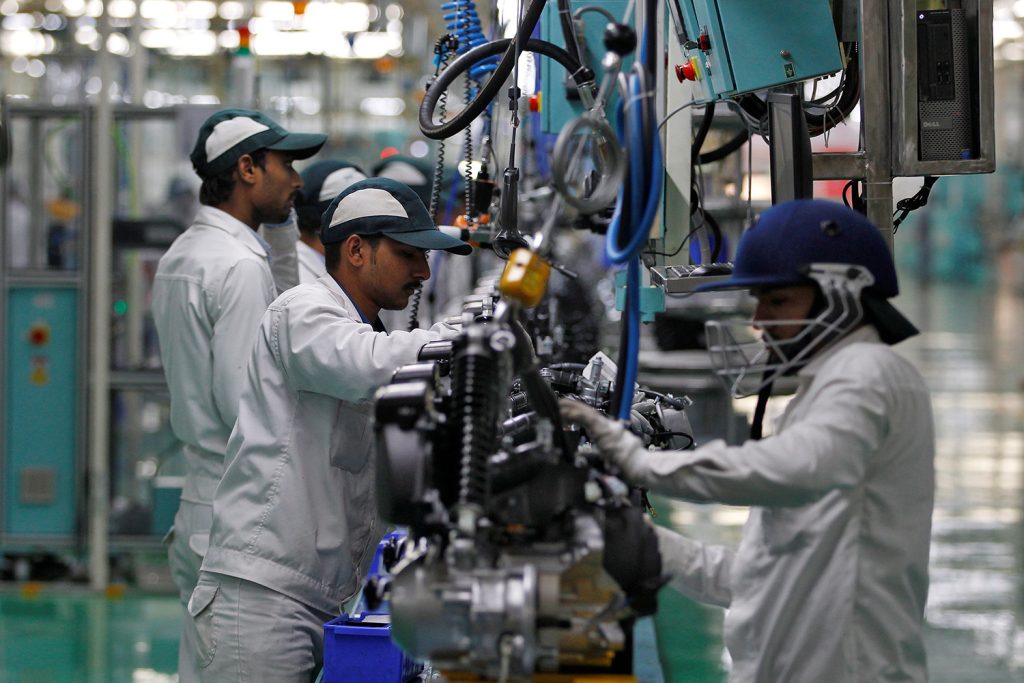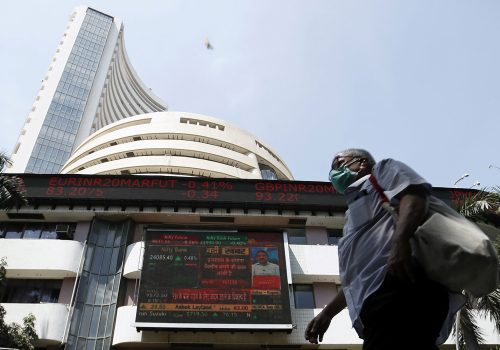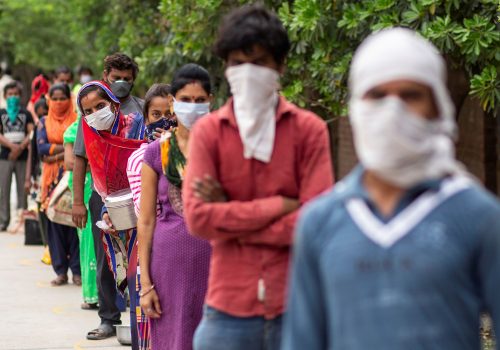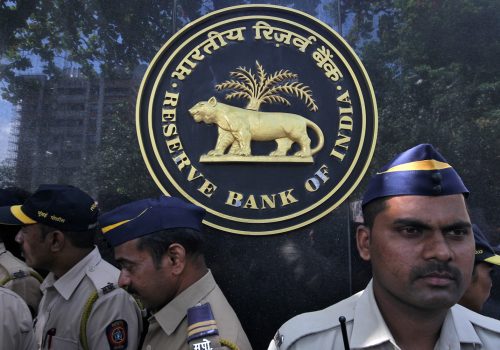Indian Prime Minister Narendra Modi has announced a new national initiative to achieve “Atmanirbhar Bharat” or a “self-reliant” India. Within this vision he has argued that “today it is the need of the hour that India should play a big role in the global supply chain.” He also specified a number of new policy priorities such as a “rational tax system, simple and clear rule-of-law, good infrastructure, capable and competent human resources, and a strong financial system.” In order to “bring India on the path of rapid development again,” the prime minister has explained, “five things are very important to build a self-reliant India: intent, inclusion, investment, infrastructure, and innovation,”
While self-reliance could be interpreted as inward-looking or protectionist, the emphasis on linking India up with global value chains suggests a different approach. India’s commerce and industry minister explained during a recent conference on exports that the idea “is not just about greater self-reliance, but also engaging with the world from a position of strength. India should be seen as a dependable partner and reliable friend in the world market, particularly when the global supply chains are undergoing [a] rejig…We should talk from the position of strength, be competitive, and provide quality products to the world.”
A significant part of the economic dimension of “Atmanirbhar Bharat” is on increasing the competitiveness of Indian production and building connections to global value chains (GVCs). This implies a need to turn away from protectionist policies, while using the lessons from new industrial and trade policy. A new policy approach is needed to increase global connectivity, and improve firm and industry level competitiveness. To improve global trade opportunities, policy measures have to effectively strengthen India’s links to GVCs and “lead firms” (i.e. firms which manage GVCs), and facilitate large scale investment while promoting domestic production capabilities.
According to the Organization of Economic Co-Operation and Development’s Global Value Chains indicators, in 2015 India’s total GVC participation was 34 percent, compared to the global leader Singapore at about 62% percent. Other economies such as Malaysia, Taiwan, and Vietnam are over 55 percent. While India lags behind these neighbors, its participation is actually roughly the same as China’s (about 35 percent). Despite this low percentage, China is considered at the core of GVCs because of the large value of its exports. In 2018, China’s merchandise exports were 7.6 times that of India. Therefore, even with a similar GVC rate of participation, China’s absolute level of GVC participation is several times higher than that of India. Likewise, Vietnam has achieved very significant GVC growth through a rapid increase in exports. The ratio of Vietnam’s merchandise exports to India’s exports has increased from 30 percent in 2010 to 80 percent in 2018.
A focus on exports and GVCs generally go hand in hand, and if India wants to strengthen links to GVCs, it will require a facilitating import policy, in addition to several other policy steps. Sustained improvement in domestic competitiveness is the key to increasing both exports and GVC participation. The policies mentioned by the prime minister in his “Atmanirbhar Bharat” announcement mainly aim at doing just that.
“Global” value chain transactions involve both exports and imports. By definition, a country’s GVC (backward) participation rises with an increase in the share of imported inputs/components in its exports. Thus, protectionist policies that limit imports lower GVC participation. Protectionist policies have nonetheless been implemented in India and some other developing nations with the hope that they could attract foreign direct investment (FDI) by lead firms to increase both domestic output and exports (i.e. linking up with GVCs). However, within a large economy like India, the primary focus of producers operating under a protectionist regime is not on exports, but on the domestic market which is easier to access. Import protection results in a rise in costs, with cost-inefficient inputs being produced domestically, while those which cannot be domestically produced trigger higher tariff costs. GVCs and exports require cost-efficient products, and import protection works against that.
If FDI must focus on exports, it needs policy support with initiatives that reduce the cost of production. Countries that have transformed themselves to become major centers for GVCs have used policies to improve operational conditions (including facilitation of imports and exports), incentives/subsidies, a focus on selected priority sectors/product areas, special incentives for large investment and technology-intensive sectors, and developing the domestic ecosystem to dynamically enable linking-up with GVCs. These multiple initiatives must be supplemented with mechanisms for policy co-ordination between ministries/departments, and the central and the state governments. A consistent and rapid problem-solving approach is required with high-level oversight and periodic monitoring to ensure effective policy implementation.
Each major node of the GVC has its own value chain with several hundred parts and components and attendant inventory requirements. The lead firm managing GVCs emphasizes a fast turnaround of products from firms participating in the value chain, with consistent quality and standards, and competitive cost-efficiency. In this framework, delays due to policy and infrastructure result in a double negative impact. They reduce the operational efficiency of the value chain by disrupting inventory planning and raising inventory costs of operation. The increased uncertainty and cost make it difficult to meet the conditions of the existing contracts (including export contracts), and lead firms seek alternative suppliers elsewhere that can be more reliable for supplying products with greater timeliness and cost-efficiency.
Feedback from exporters suggests that there are some common areas of concern across most sectors, e.g. a need for quick clearances for Goods and Services Tax and customs, together with more simplified systems for both policy areas. Two other major common concerns are inefficient implementation of support policies and a conflict among the main objectives emphasized by different implementing agencies relevant for the GVCs. An improved performance will be achieved only if exports and promoting links with GVCs are treated as a national priority. As mentioned above, this requires an open and facilitating trade policy which allows cost-effective imports, rather than blocking them.
GVCs and lead firms also seek easier market access abroad to level the playing field with other countries that have better access through Free Trade Agreements (FTAs) and other types of bilateral or regional agreements (e.g. agreements to raise and resolve bilateral trade concerns). Innovative ways need to be developed to address concerns relating to FTAs with flexibilities and conditional safeguards. Examples from existing FTAs and the World Trade Organization (WTO) Agreement can provide an initial list of options. Even the largest economy in the world, the United States, has had to seek such provisions in its FTAs and bilateral agreements.
The links between GVCs and competitiveness suggest an approach which needs to embody Prime Minister Modi’s vision that: “for us, reforms are not any random or scattered decisions. For us, reforms are a systemic, planned, integrated, inter-connected and futuristic process.” The new “Atmanirbhar Bharat” vision requires an inter-connected, integrated, facilitated, and open approach, not a protectionist one.
Dr. Harsha Vadhana Singh is a nonresident senior fellow with the Atlantic Council’s South Asia Center. He was also the deputy director-general at the World Trade Organization from 2005-2013.
Further reading:
Image: Employees work on an assembly line of Honda Motorcycle & Scooter India during a media tour to the newly inaugurated plant at Vithalapur town in the western state of Gujarat, India, February 17, 2016. REUTERS/Amit Dave/File Photo



